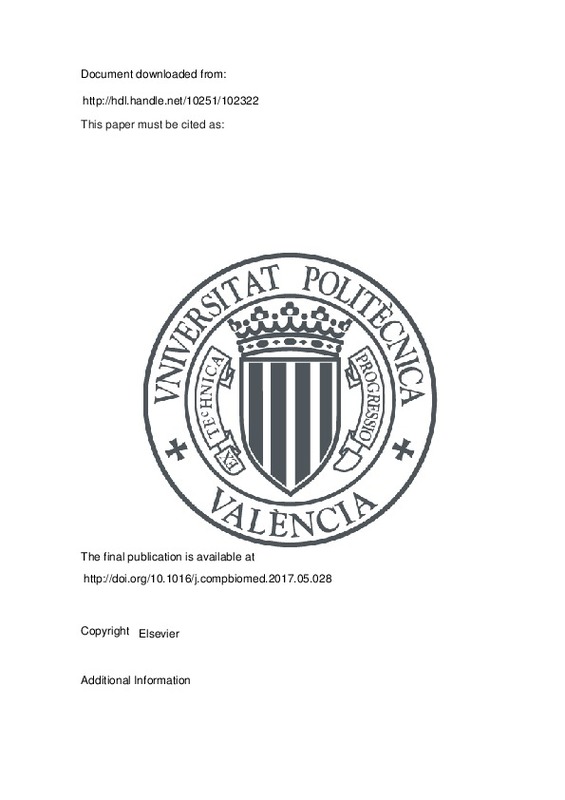JavaScript is disabled for your browser. Some features of this site may not work without it.
Buscar en RiuNet
Listar
Mi cuenta
Estadísticas
Ayuda RiuNet
Admin. UPV
Noisy EEG signals classification based on entropy metrics. Performance assessment using first and second generation statistics
Mostrar el registro sencillo del ítem
Ficheros en el ítem
| dc.contributor.author | Cuesta Frau, David
|
es_ES |
| dc.contributor.author | Miró Martínez, Pau
|
es_ES |
| dc.contributor.author | Jordán Núñez, Jorge
|
es_ES |
| dc.contributor.author | Oltra Crespo, Sandra
|
es_ES |
| dc.contributor.author | Molina Picó, Antonio
|
es_ES |
| dc.date.accessioned | 2018-05-21T04:25:55Z | |
| dc.date.available | 2018-05-21T04:25:55Z | |
| dc.date.issued | 2017 | es_ES |
| dc.identifier.issn | 0010-4825 | es_ES |
| dc.identifier.uri | http://hdl.handle.net/10251/102322 | |
| dc.description.abstract | [EN] This paper evaluates the performance of first generation entropy metrics, featured by the well known and widely used Approximate Entropy (ApEn) and Sample Entropy (SampEn) metrics, and what can be considered an evolution from these, Fuzzy Entropy (FuzzyEn), in the Electroencephalogram (EEG) signal classification context. The study uses the commonest artifacts found in real EEGs, such as white noise, and muscular, cardiac, and ocular artifacts. Using two different sets of publicly available EEG records, and a realistic range of amplitudes for interfering artifacts, this work optimises and assesses the robustness of these metrics against artifacts in class segmentation terms probability. The results show that the qualitative behaviour of the two datasets is similar, with SampEn and FuzzyEn performing the best, and the noise and muscular artifacts are the most confounding factors. On the contrary, there is a wide variability as regards initialization parameters. The poor performance achieved by ApEn suggests that this metric should not be used in these contexts. | es_ES |
| dc.language | Inglés | es_ES |
| dc.publisher | Elsevier | es_ES |
| dc.relation.ispartof | Computers in Biology and Medicine | es_ES |
| dc.rights | Reconocimiento - No comercial - Sin obra derivada (by-nc-nd) | es_ES |
| dc.subject | Electroencephalograms | es_ES |
| dc.subject | Signal Classification | es_ES |
| dc.subject | Approximate Entropy | es_ES |
| dc.subject | Sample Entropy | es_ES |
| dc.subject | Fuzzy Entropy | es_ES |
| dc.subject | EEG Artifacts | es_ES |
| dc.subject.classification | MATEMATICA APLICADA | es_ES |
| dc.subject.classification | ESTADISTICA E INVESTIGACION OPERATIVA | es_ES |
| dc.subject.classification | ARQUITECTURA Y TECNOLOGIA DE COMPUTADORES | es_ES |
| dc.title | Noisy EEG signals classification based on entropy metrics. Performance assessment using first and second generation statistics | es_ES |
| dc.type | Artículo | es_ES |
| dc.identifier.doi | 10.1016/j.compbiomed.2017.05.028 | es_ES |
| dc.rights.accessRights | Abierto | es_ES |
| dc.date.embargoEndDate | 2018-08-01 | es_ES |
| dc.contributor.affiliation | Universitat Politècnica de València. Departamento de Informática de Sistemas y Computadores - Departament d'Informàtica de Sistemes i Computadors | es_ES |
| dc.contributor.affiliation | Universitat Politècnica de València. Departamento de Matemática Aplicada - Departament de Matemàtica Aplicada | es_ES |
| dc.contributor.affiliation | Universitat Politècnica de València. Departamento de Estadística e Investigación Operativa Aplicadas y Calidad - Departament d'Estadística i Investigació Operativa Aplicades i Qualitat | es_ES |
| dc.description.bibliographicCitation | Cuesta Frau, D.; Miró Martínez, P.; Jordán Núñez, J.; Oltra Crespo, S.; Molina Picó, A. (2017). Noisy EEG signals classification based on entropy metrics. Performance assessment using first and second generation statistics. Computers in Biology and Medicine. 87:141-151. doi:10.1016/j.compbiomed.2017.05.028 | es_ES |
| dc.description.accrualMethod | S | es_ES |
| dc.relation.publisherversion | http://doi.org/10.1016/j.compbiomed.2017.05.028 | es_ES |
| dc.description.upvformatpinicio | 141 | es_ES |
| dc.description.upvformatpfin | 151 | es_ES |
| dc.type.version | info:eu-repo/semantics/publishedVersion | es_ES |
| dc.description.volume | 87 | es_ES |
| dc.identifier.pmid | 28595129 | |
| dc.relation.pasarela | S\338231 | es_ES |







![[Cerrado]](/themes/UPV/images/candado.png)

